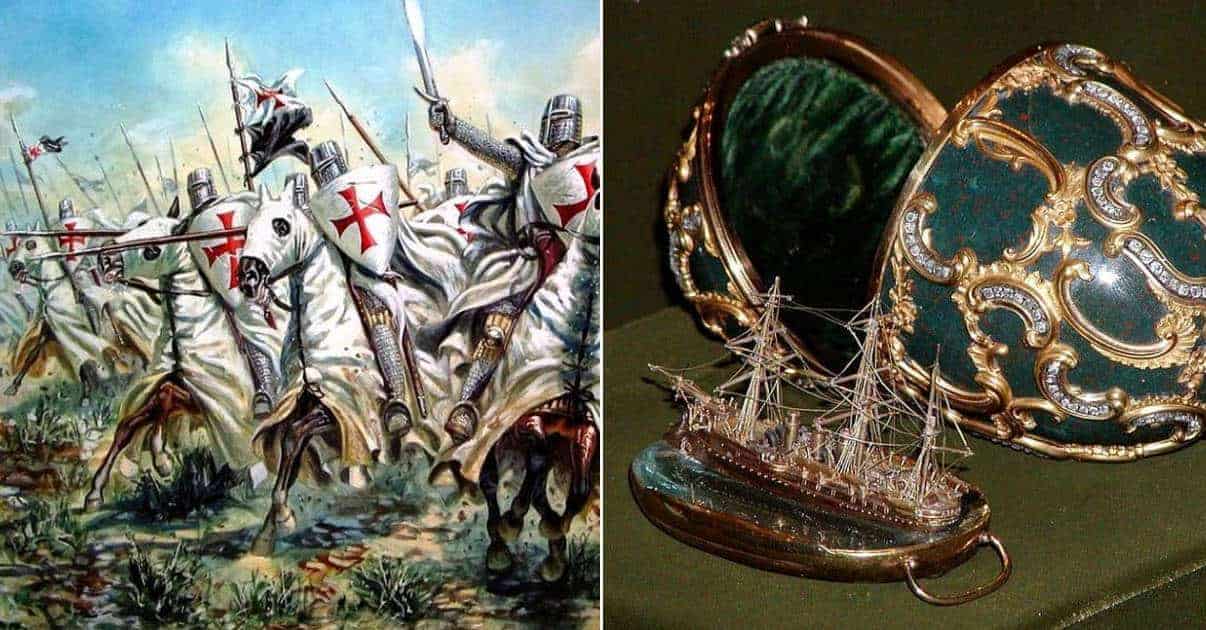From Treasure Island to The Da Vinci Code, tales lost loot have always fired the popular imagination. And for good reason. What history fan hasn’t imagined that they might be the one to outwit the experts, put all the clues together and solve an age-old mystery and get filthy rich in the process. But surely legends of lost loot are just that? Not always. Indeed, some stories are true. There really are artifacts of huge historical significance, as well as vast mounds of treasure, out there waiting to be discovered.
In some cases, it might be a matter of following the clues left behind in diaries or paintings. In others, it might be a case of dumb luck. But the good news is that so-called lost treasures are sometimes found, and not just by professional archaeologists. From the man who stumbled across a priceless Indian necklace in a London antique store to the metal detectorists who used their wits to find the Saxon treasures of Sutton Hoo in England, there’s plenty of proof to suggest that the earth or the sea sometimes give up their secrets.
Here are 12 real-life treasures still out there waiting to be re-discovered. Could you be the one to find them?

Blackbeard’s Loot
Edward Teach, better known as Blackbeard, is the ultimate figure from the so-called Golden Age of Piracy. At the beginning of the eighteenth century, the English buccaneer terrified ships sailing in the waters of the West Indies, even if he relied just as much on the power of his reputation as on any real violence. And this reputation has just kept growing over the years, with the legend only enhanced by rumors of lost treasures, buried by Blackbeard on some desert island and just waiting to be discovered…
Academic historians of the pirates of centuries past largely agree that buccaneers really didn’t bury their loot in a secret location. After all, pirate captains always had a crew in tow, so they could hardly hope to keep such a stash secret for long. But still, ripping yarns such as Treasure Island continue to fire the imagination, and there are some who believe that the greatest pirate of them all took his secret to the grave.
Certainly, there was no way Blackbeard could have given up his secret. Instead of being captured, he was brutally killed in a battle off the coast if Ocracoke Island in the West Indies in 1772. According to accounts from those men who fought alongside him, he was shot five times and stabbed 20 times and then, upon being pronounced dead, his head was cut off to be taken back to the United States and his body tossed into the ocean. In 1996, marine archaeologists located his sunken ship, the Queen Anne’s Revenge, though there was no sign of any ‘pieces of silver’, or indeed of the vessel’s long-dead, decapitated skipper.
So, if he did have some loot stashed away, Blackbeard never made its location known. Some amateur sleuths believe that he buried gold coins and other treasures under the sands of a secluded cove in New Providence or North Carolina, while others point out that it’s more likely he would have chosen Patton Island or even Skull Island to keep his secret safe. Despite the passing of years, the legend refuses to go away, and investigators believe that close examination of the records of the time could be all that’s needed to strike gold.
According to folklore, a pirate would kill a captive on the exact spot they had buried their treasure. Could this be the key to finally unlocking the mystery of Blackbeard’s Treasure? Or, like the man himself, is the legend far more exciting and enticing than the reality?

